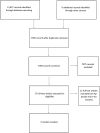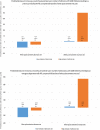Does pulse oximeter use impact health outcomes? A systematic review
- PMID: 26699537
- PMCID: PMC4975806
- DOI: 10.1136/archdischild-2015-309638
Does pulse oximeter use impact health outcomes? A systematic review
Abstract
Objective: Do newborns, children and adolescents up to 19 years have lower mortality rates, lower morbidity and shorter length of stay in health facilities where pulse oximeters are used to inform diagnosis and treatment (excluding surgical care) compared with health facilities where pulse oximeters are not used?
Design: Studies were obtained for this systematic literature review by systematically searching the Database of Abstracts of Reviews of Effects, Cochrane, Medion, PubMed, Web of Science, Embase, Global Health, CINAHL, WHO Global Health Library, international health organisation and NGO websites, and study references.
Patients: Children 0-19 years presenting for the first time to hospitals, emergency departments or primary care facilities.
Interventions: Included studies compared outcomes where pulse oximeters were used for diagnosis and/or management, with outcomes where pulse oximeters were not used.
Main outcome measures: mortality, morbidity, length of stay, and treatment and management changes.
Results: The evidence is low quality and hypoxaemia definitions varied across studies, but the evidence suggests pulse oximeter use with children can reduce mortality rates (when combined with improved oxygen administration) and length of emergency department stay, increase admission of children with previously unrecognised hypoxaemia, and change physicians' decisions on illness severity, diagnosis and treatment. Pulse oximeter use generally increased resource utilisation.
Conclusions: As international organisations are investing in programmes to increase pulse oximeter use in low-income settings, more research is needed on the optimal use of pulse oximeters (eg, appropriate oxygen saturation thresholds), and how pulse oximeter use affects referral and admission rates, length of stay, resource utilisation and health outcomes.
Keywords: Evidence Based Medicine; Health services research; Outcomes research; Paediatric Practice; Respiratory.
Published by the BMJ Publishing Group Limited. For permission to use (where not already granted under a licence) please go to http://www.bmj.com/company/products-services/rights-and-licensing/
Figures


Comment in
-
Pulse oximetry: an important first step in improving health outcomes, but is of little use if there is no oxygen.Arch Dis Child. 2016 Aug;101(8):685. doi: 10.1136/archdischild-2015-310055. Epub 2016 Apr 12. Arch Dis Child. 2016. PMID: 27073158 Free PMC article. No abstract available.
References
-
- World Health Organization. Manual on use of oxygen therapy in children 2014. http://www.who.int/maternal_child_adolescent/documents/child/en/.
-
- Lozano JM. Epidemiology of hypoxaemia in children with acute lower respiratory infection [oxygen therapy in children]. Int J Tuberc Lung Dis 2001;5:496–504. - PubMed
Publication types
MeSH terms
Grants and funding
LinkOut - more resources
Full Text Sources
Other Literature Sources
Molecular Biology Databases
Research Materials
